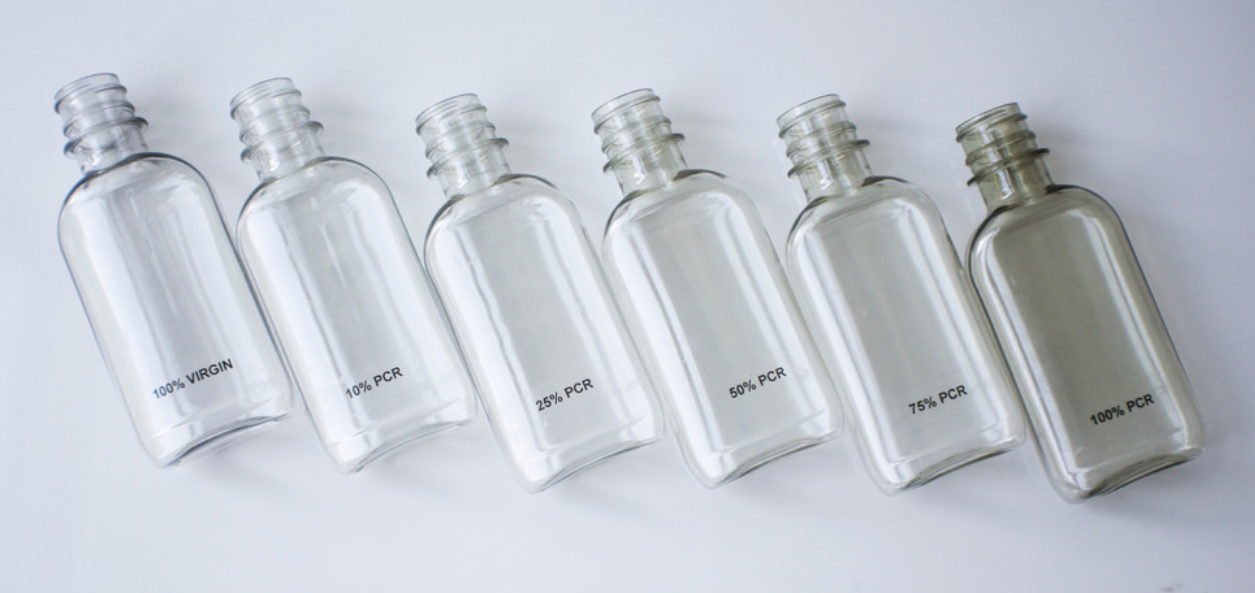Different PCR (Post-Consumer Recycled) ratios may result in subtle or noticeable differences in appearance, depending on the production process and additives used

High PCR ratio (e.g. 50%-100%)
Usually appears light gray, light yellow or light green, because the recycled plastic has degraded pigments after multiple processing, or mixed with recycled materials of different colors.
The color may be uneven, with slight spots or impurities (especially low-quality recycled materials).
Low PCR ratio (e.g. 10%-30%):
The color is closer to the original plastic (transparent or solid color), because the PCR content is low and has little effect on the overall color.
Transparent bottle:
High PCR ratio is usually difficult to maintain transparency and will appear turbid or foggy.
2. Surface texture
High PCR ratio:
The surface may be rougher or have a slightly granular feel (due to differences in the fluidity of the recycled material after melting).
The bottle may show slight streaks or weld marks (due to uneven mixing of the recycled material during processing).
Low PCR ratio:
The surface is smoother and more uniform, close to the texture of virgin plastic.
3. Logo and labels
Direct labeling:
Many brands will indicate the PCR ratio on the bottom of the bottle or on the label (such as "30% PCR").
Environmental protection logo (such as "recycling logo ♻️" "Made from Recycled Material").
Color marking: Some manufacturers will use specific color labels to distinguish the PCR ratio (such as green labels represent high recycled materials).
4. Transparency and glossiness
High PCR: Poor light transmittance, the bottle appears dull or matte.
Low PCR/virgin material: good light transmittance and higher gloss (especially transparent or light-colored bottles).
5. Impurities and defects
High PCR bottles may contain:
Very fine black spots (carbonized impurities or residual contaminants).
Uneven thickness of the bottle mouth and bottom (caused by differences in the fluidity of recycled materials).
Notes
Brand differences: Big brands (such as Coca-Cola and Evian) will use advanced processing technology to reduce appearance differences, so that high-PCR bottles are still close to the texture of raw materials.
Influence of additives: Some manufacturers will add masterbatches or opacifiers to cover up the gray tone of PCR and make the bottle look more "clean".
If you need to accurately determine the PCR ratio, the most reliable way is to check the product label or contact the manufacturer.



